Futuristic learning spaces to surpass limitations of walls
by: The Design blog, 2012-02-22 13:26:10 UTC
Asmita Prasad:
The concept
Due to ever shrinking school budgets, limited capital funding aging infrastructure and overcrowded schools that must respond to shifting populations, school districts prefer to invest in relocatable classrooms since future increase in student enrollment cannot always be accurately judged when permanent classrooms and buildings are being planned and constructed. In remote communities, places dealing with natural disasters or school districts dealing with higher student enrollment, modular classrooms can help schools best utilize their budget. With once-futuristic technology like 3D displays becoming more cost effective and commonplace now, relocatable classrooms of the future can be pre-fitted with cutting edge technologies that would make relocatable classrooms less expensive than traditional additions to schools.

Futuristic Classroom
The Inspiration
In the past few decades, relocatable classrooms have become fairly commonplace for communities coping with natural disasters, remote communities or regions that need quick-to-install facilities to provide classrooms for a lot of children within a short period of time. These relocatable classrooms, so far, have been fairly basic setups that provide children with a make-shift classroom but recent developments in the field promises to make relocatable classrooms of the future more stimulating and exciting for both educators as well as the students. Thanks to developments in telepresence and relocatable classroom technologies, children living in areas coping with natural disasters or those living in remote areas of the world no longer have to miss their school terms. These innovative solutions for education and schooling have led to the development of the next generation of relocatable classrooms that give us a peek into what schools of the future could look like.
What makes them stand out?
Most of the modern modular and relocatable classrooms are designed around systems that enhance portability without adversely affecting their functionality. Since new research has shown how natural light and outdoor environment positively impact students’ understanding of mathematical concepts and promote learning of new languages, classrooms that can adjust to different climatic conditions, site topographies and different curriculum and student needs can enhance students’ productivity a lot. Some of the newer modular relocatable classroom designs also place a great emphasis on incorporating sustainable elements like water harvesting, recycling and solar and wind-energy harvesting that can potentially allow some of these unit to be set up in remote. Disaster struck areas with no access to grid power or water supply.
Eco Credentials:
Since relocatable classroom designs have to be modular, they can be easily fashioned out of prefabricated and recycled materials. Modular components made from recycled polystyrene make it easier to transport and once on site, these components can be assembled using local soil and plants. Thanks to an easy-to-dismantle structure, these classrooms can be setup an angle to capture maximum sunlight and even moved around to correspond to the shifting position of the sun during the year. The use of flexible components allows these classrooms to incorporate rainwater harvesting systems during the rainy season which can later be taken out and replaced with PV panels. Apart from being easily transportable, these small lightweight modular elements also allow the structure of these relocatable classrooms to make the best of changing climatic situations as well.
Feasibility
Most of the technology required to make these classrooms more readily available in the market currently exists so it’s only a matter of time before “ordering” one for a school district would only require school administrators to fill in the necessary paperwork. Given the low set up cost and the fact that most of these structures would be made from recycled materials, prefab classrooms would only need the expertise of local construction agencies to set it up.
Related Trends:
1. eMod concept

eMOD concept
A building solution that can be adapted to specific needs such as learning outcomes, climatic conditions and site requirements, the eMOD (Educational Modular Offsite Design) is a great new configurable modular design system for relocatable and expandable classroom designs. The concept links the requirements of 21st century learning with the demands out on limited space allocated for schools and offers a solution in the form of a transportable and adaptable space that is simple enough to install yet sophisticated enough to sustain futuristic learning environments.
2. MODUPOD concept

MODUPOD Concept
To promote critical thinking for students and enhance interaction, NBRS+PARTNERS’ MODUPOD concept envisions classrooms of the year 2025 to incorporate 3D text books and a radical learning environment. To make the learning experience more effective for teachers and students the concept uses flexible PODS, smart interiors and a fast assembly design with a permeable student resource center at its heart and clusters of dynamic multi-modal rooms around it. This central core can be used to display student work, technological innovation and environmental facts as well as energy consumption of the building and school news, via multimedia screens. To give students the opportunity to learn from nature, the structure features Outdoor Spaces. To showcase interactive learning and to offer students the opportunity to collaborate and gather, the design features a Social Pod. A Breakout Pod with transparent walls helps students be resourceful and observe while the Project Pod helps them learn on their own view interactive methods.
3. Studioquint’s Concept

Studioquint’s Concept
Made to be both place specific as well as spatial, the rational classroom concept by Studioquint uses 3D origami inspired scale on the external and internal walls. The scales help the concept achieve occupiable three dimensional spaces internally while they respond to the context, outlook and orientation on the outside. As a part of the concept’s transportable form, the local contextual landscape is incorporated within the rooftop of the design. Recycled polystyrene components offer the design great sustainability functions while a high rate of sun shielding is provided via photovoltaic panels that are set at an angle of 20 degrees. Reservoirs for rainwater are an important part of the design and the building uses local soil and plants to add to the thermal building mass.
4. LAVA’s Design Concept

LAVA’s Design Concept
Made of easily transportable and lightweight small modular elements, the relocatable school from LAVA features a repeatable and symmetrical geometry and uses eco materials and prefabrication techniques to come up with a sustainable design for the learning space for the future. To create more light or shade, the structure uses a flexible system with a manually operable modular facade system integrated in it. To make the design more adaptable to future learning methods, learning clusters and changing class sizes, the design allows various configurations to be interlocked via a “triple axis” geometry design.


 Formafantasma’s Natural Botanica Vessels Look Like Archaeological Artifacts
Formafantasma’s Natural Botanica Vessels Look Like Archaeological Artifacts
by: Inhabitat , 2012-02-22 22:45:46 UTC

We recently showed you Formafantasma’s crafty vessels made from flour, agricultural waste and limestone, but the design studio has developed another amazing set of archaic-looking objects. Commissioned by Plart, Formafantasma created ‘Botanica’, a collection made from natural polymers with vegetal and animal origins. Using rosin, dammar, copal (a sub-fossil state of amber), natural rubber, shellac, bois durci, and other natural materials, Formafantasma developed a quirky, biodegradable, and very innovative line.







Read the rest of
Formafantasma’s Natural Botanica Vessels Look Like Archaeological Artifacts
Permalink |
Add to
del.icio.us |
digg
Post tags: 19th century, Animal Origin, Archaic objects, Art, bois durci, Botanica Vessels, Botanical, copal, dammar, Decorative Objects, Design Academy of Eindhoven, Design Museum London, Designs of the Year Product Award 2012, Formafantasma, green materials, Natural Polymers, natural rubber, Plart, rosin, shellac, Vegetal origin
Electrolux Design Lab competition is on for 2012
by: Gizmag Emerging Technology Magazine, 2012-02-21 07:14:12 UTC

Entries are now open for the 2012 Electrolux
Design Lab competition. Now in its 10th year, the competition is open to current undergraduate industrial design students and 2011 graduates who are being asked to get busy around the home by designing "appliances that will provide a fuller sensory experience." ..
Continue Reading
Electrolux Design Lab competition is on for 2012Section: Good ThinkingTags: Competition,
Design Lab,
Electrolux
Related Articles:


 Material Xperience China
Material Xperience China
by: Sustainable Design News, 2012-02-17 22:24:27 UTC
 The renowned Dutch event Material Xperience will have its first Chinese edition in Shanghai on March 27-29.
The renowned Dutch event Material Xperience will have its first Chinese edition in Shanghai on March 27-29.
Material Xperience China revolves around the theme "Green Materials" and presents more than 250 innovative materials from the Materia collection.
 Pixel Platter by Vivian Chiu
Pixel Platter by Vivian Chiu
by: mocoloco, 2012-02-20 19:09:45 UTC



 miso + s.o.n: kamijiya paper table
miso + s.o.n: kamijiya paper table
by: Designboom - Weblog, 2012-02-20 10:24:00 UTC
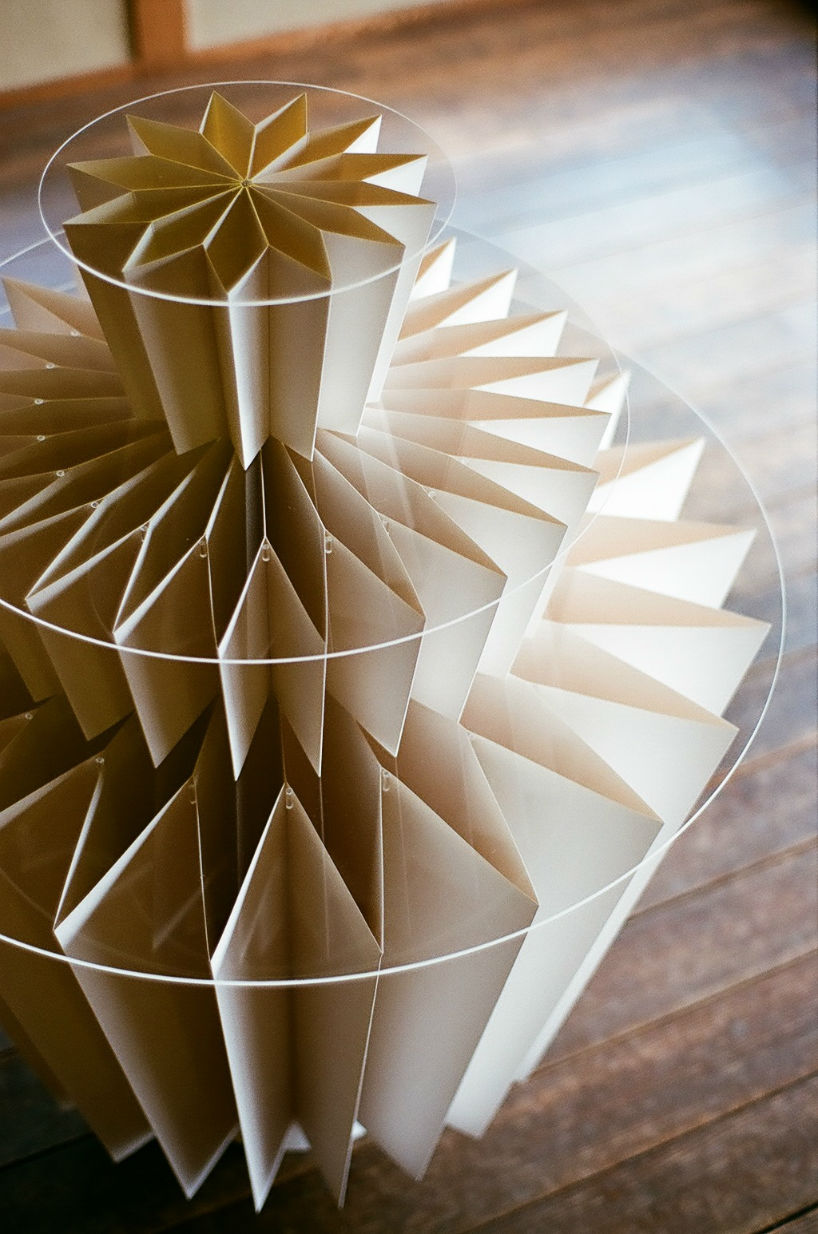
created for suzuki shofudo a traditional paper company in kyoto, japan, this display furniture uses only paper in its construction and design.
read more
philippe starck: peugeot city bike for bordeaux, france
by: Designboom - Weblog, 2012-02-20 09:23:00 UTC

considered a cross between a bicycle and a scooter, the design is set to promote and continue encouraging citizens to use the french city's bike sharing program.
read more
US Virgin Islands Plans 60% Reduction in Fossil Fuel Use By 2025
by: Eco Geek Latest, 2012-02-20 18:07:11 UTC

The U.S. Virgin Islands has worked with NREL to come up with a strategic plan to reduce fossil fuel use by 60 percent by 2025. The plan will include the deployment of five different renewable energy technologies and a huge roll-out of energy efficiency improvements.
The USVI, much like other islands, currently depends heavily on imported fuel for their energy needs, making electricity cost almost $0.50/kWh for residents -- about five times more than residents of the continental U.S. The need for switching to renewable sources of energy is just as much economical as it is environmental for the islanders.
NREL wanted to come up with a realistic plan for reducing the USVI's dependence on fossil fuels, so they worked with the government, utilities and public and private groups to map out the territory's potential for different renewable energy and efficiency solutions. The organization came up with the following mix of efforts to get the islands to a 60 percent reduction:
- 2 percent biomass
- 3 percent landfill gas
- 3 percent solar
- 6 percent wind
- 8 percent waste-to-energy
- 38 percent energy efficiency
The USVI burns 2.6 million barrels of oil every year for electricity and water desalination. By 2025, if this plan comes together, that number could drop that number to just over 1 million barrels, creating a cheaper, homegrown electricity portfolio for the islands and a major slash in emissions.
via NREL
Image via Don Buchanan, USVI Energy Office
 Otter personal disaster pack prepares you for life after a flood
Otter personal disaster pack prepares you for life after a flood
by: The Design blog, 2012-02-21 11:47:46 UTC
Asmita Prasad:
When a flash flood strikes, one hardly has the time to pack up and carry essential documents like ID cards, banking cards or passports in a regular bag, which would be essential for them after they survive the emergency. However, the Otter personal disaster pack by designer Benson Lee comes with built-in sealed pockets that can be used to quickly pack up a few essential documents when an emergency occurs.

Otter - Personal Disaster Pack
With a built-in deployable life jacket, the Otter personal disaster pack allows users to survive severe flooding with the two built-in quick sealing storage pockets providing users with a safe and dry space in which they can carry their identification cards, baking documents or even cellphones etc. Since most of these documents are essential in starting life over after the disaster has been safely escaped, they can provide survivors with moral support when they need to rebuild their lives.
Picture Gallery
Otter - Personal Disaster Pack by Benson Lee
The Otter personal disaster pack is made up of three main components with the first being a pouch which contains an inflatable life vest that can be inflated using potassium nitrate and sodium azide. The second component is a frame that allows users to mount different bags or storage devices onto the pack via nylon straps. The third component is a dual compartment dry bag that facilitates quick storage of important personal belongings and features a polycarbonate protective shell that protects against sharp debris. Each of the three components can be inflated to keep the user afloat in case of a flood.
The Otter Personal Disaster Pack is inspired by the backward swimming sea otter and the inflatable safety jacket allows users to preserve their energy while they float in the water. The pack is devised to ensure that the victim’s head stays above the water at all times. The pack also enables clustering of many packs together that helps people form mini groups in the water to prevent them from drifting away individually and makes it easier for rescuers and emergency personnel to spot and rescue them easily.
[Cheers Benson]


 Quad is one of the most planet friendly of all Fisher Price Friends interactive toys
Quad is one of the most planet friendly of all Fisher Price Friends interactive toys
by: The Design blog, 2012-02-21 12:27:47 UTC
Asmita Prasad:
Developed for the Fisher-Price Friends range of toddler friendly toys, the Quad is an interactive humanoid toy by designer Endrit Hajno. The toy’s design explores the possibilities of making children’s toys more sustainable and planet friendly. The Quad comes with an innovative solar and wind charger that can power the toy using nothing but natural air and sunlight.

Quad an interactive solar toy
Picture Gallery
Quad is an interactive toy that uses solar and wind energy to sustain its life level.
With suction cups on its hands and feet, Quad can be attached to a window glass to expose the solar panel installed in its tummy to sunlight and charge the toy. The interactive toy comes with a friendly face and human-like features that make it easier for children to develop a bond with it. A modern day version of Raggedly Andy or Raggedly Anne dolls, the toy comes with built-in Bluetooth that lets tech oriented kids post their “scores” on social networking games and share with friends.
The toy also teaches kids how to take care of their toys by providing them with statistics on life level, wind points, solar points and general information about its health condition and the data can be accessed via Bluetooth and shared online. This makes the toy more contemporary and attractive for kids who can invent all kinds of games and stories around the doll-like toy and helps toy manufacturers promote sustainable charging solutions for toys that run on batteries.
Source: Endrit Hajno








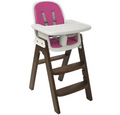

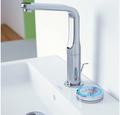
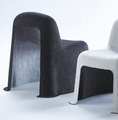
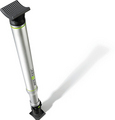
Comments by our Users
Be the first to write a comment for this item.